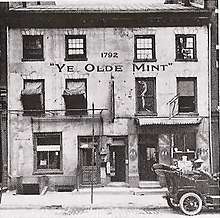Ye olde


"Ye olde" is a pseudo-Early Modern English stock prefix, used anachronistically, suggestive of a Merry England, Deep England or "old, as in Medieval old" feel. A typical example would be Ye Olde English Pubbe or similar names of theme pubs.
History
The anachronistic use of "ye olde" dates at least to the late 18th century. The use of the term "ye" to mean "the" derives from Early Modern English, in which the was written þe, employing the Old English letter thorn, þ. During the Tudor period, the scribal abbreviation for þe was ![]()
![]()
See also
References
External links
| Look up ye olde in Wiktionary, the free dictionary. |